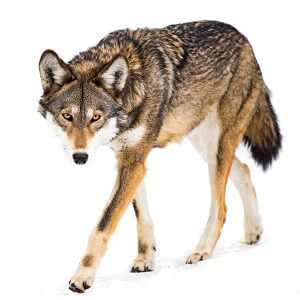Difference in Prey Animals
7/4/15

Last Updated on
How are Prey Animals in the Wild Nutritionally Different from Food Animals in a Modern Raw Diet?
by Steve Brown
There are important nutritional differences between the prey animals that ancestors of our dogs and cats would have eaten in the wild and the farm-raised commercial animals used in a modern raw food diet. Animals raised for feeding have less protein, more fat (often with an unhealthy balance between types of fat), and fewer minerals and antioxidants.Less Fat and More Protein
Modern food animals are intentionally fattened up, often with low-cost grains. After all, the more the animal weighs the more money it is worth. Even free-range and pastured animals, while better than feed-lot fed animals, have more storage fat than wild animals. This means commercial animals provide more calories from fat and fewer from protein.
A Different Balance of Fats
Wild prey animals have a different balance of saturated, monounsaturated, and polyunsaturated fats than commercial animals of the same species. For example, ruminant meats like beef, lamb and venison are very high in saturated fats, and low in polyunsaturated fats. The differences are due to different diets, and the sedentary nature of food animals. Learn more about balanced fat.
More Minerals and Antioxidants
Prey animals have a higher mineral content than commercially-fed food animals. This is primarily because there is a low mineral content in food fed to commercial animals. Free-range meats also have a lower mineral content than ancestral prey, partially due to their higher fat content. Commercial animals are low in antioxidants as well, because their food does not contain the same amount they would find in the wild.
What This Means for Your Pet
Food made from commercial food animals, even whole animals, may not provide sufficient protein, minerals, or antioxidants when compared to ancestral prey animals. They may also have poor fat balances. That’s why I think it’s important to feed your pet as much of the lean parts of food animals as possible and to add nutrients to ensure a more natural and complete diet.
Darwin’s Formula Adjustments
The formulas of Darwin’s meals are carefully adjusted to take these differences into account and provide food options that are as close to an ancestral diet as possible. Each meal’s formula optimizes the nutritional balance for its specific meat source by adding small amounts of vital minerals. We also balance omega-3 and -6 fats by adding flax seed oil to the duck meal and hemp seed oil to ruminant meals.



